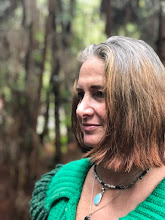Danielle and Jeffrey recorded 40 new plants that they have delivered to
Fieldhouse Farm. Joining the "
Superfood"
catagory where the
Ulu belongs, are the
Theobroma Cacoa (chocolate tree) and the
Yacon.
What is a
Superfood? A
superfood is a single plant that provides over a dozen nutritional components and possesses a high level of anti-oxidant power.
The Chocolate Tree (Theobrama Cacao)Let's first talk about the Chocolate tree (born a
Fenton, I am thrilled discover I will be able to make my own, although once you heat the cacao bean and add sugar the medicinal qualities are out the door, but a treat from time to time is just fine.)
The Aztec's and
Mayan's knew the value of cocoa beans, they used cacao beans as currency. Ponder that. If the banking system continues to fail we can always trade with cacao beans!
The Aztec's called the cacao bean "
Yollotl eztli" which means "Heart blood". Cacao supports a healthy cardiovascular
system and
returns the body to homeostasis. Keeping the heart healthy, through one of Mother Nature's many gifts, also connects our heart to that of Mother Earth
The raw cacao bean is a true superfood boasting many minerals (Cacao seems to be the #1 source of magnesium of any food) and the highest content of antioxidants in the world! More than Acai, goji or pomegranites. Anti-oxidants shields our DNA from free radical damage and protects us from illness. Superfoods like cacao also potentiates the healing properties of Superherbs such as; medicinal mushrooms, cats claw, Pau d'arco.
Raw Cacao increases the levels of specific neurotransmitters in our brains including Seratonin and Endorphins... Now I can feel good about that!
Yacon RootAnother Superfood from South America with a potatoe-like quality. The Yacon Root is a distant relative of the sunflower with edible tubers and leaves. The tuber is often chopped raw and added to salads, and are also consumed boiled or baked. Yacon roots contain important quantities of fructooligosaccharides, minerals such as potassium, as well as antioxidants.
The yacon root is good for digestion, stimulates positive colon health, acts as a probiotic that feeds friendly bacteria such as acidophilus and bifidus, and helps with the absorption of calcium and vitamins.
.jpg)



.jpg)

.jpg)


.jpg)
